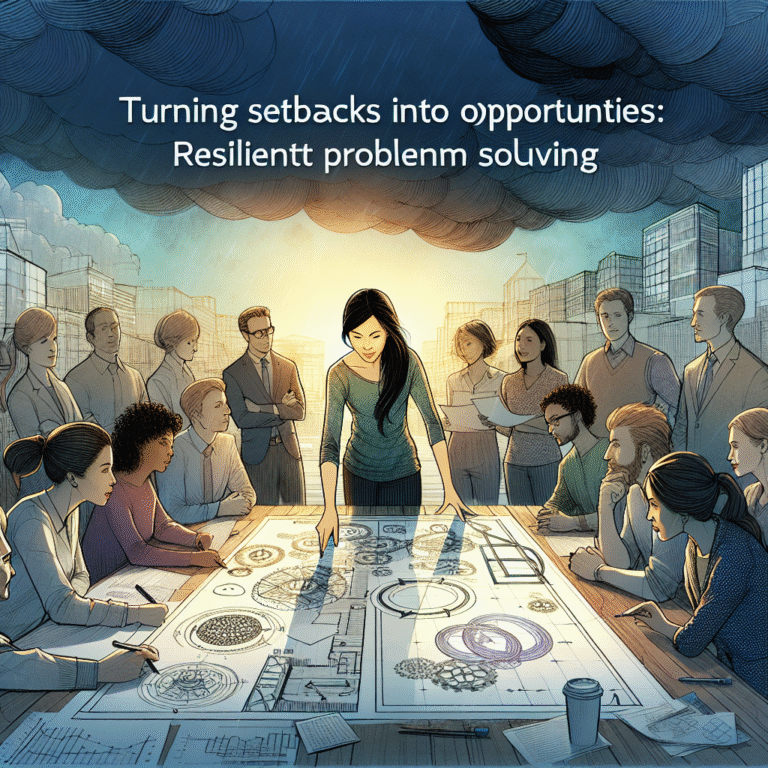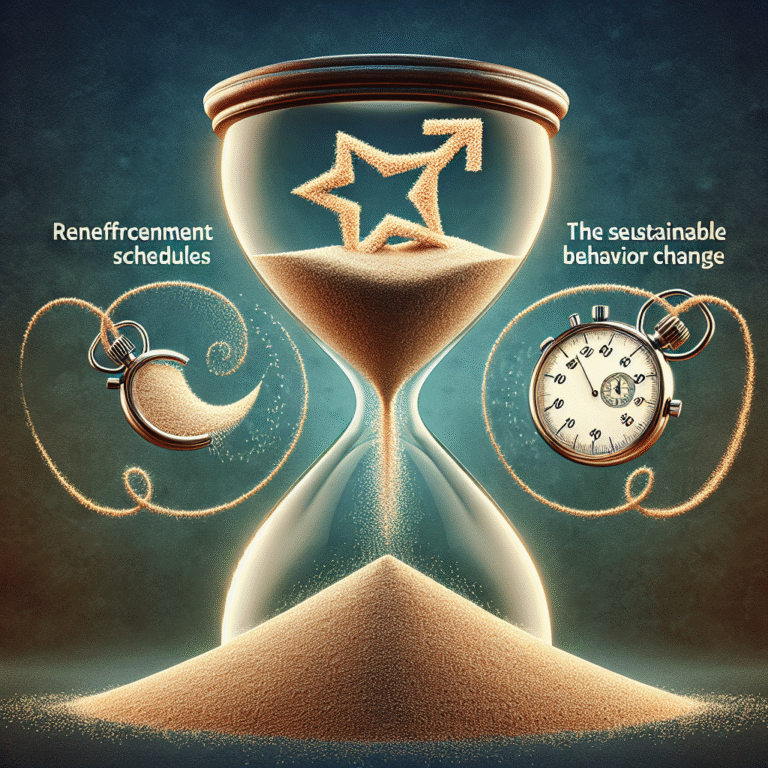
Introduction
In today’s fast-paced world, the quest for educational excellence is more pressing than ever. One of the most effective yet often overlooked tools to achieve this success is the implementation of structured schedules. Reinforcing Success: How Schedules Can Transform Learning Environments explores the myriad ways that tailored schedules can foster improved engagement, motivation, and academic outcomes. As we dive into this topic, you’ll uncover actionable insights and compelling case studies demonstrating how well-planned schedules can lead to transformative educational experiences.
The Power of Structure in Learning
Understanding Learning Environments
A learning environment is not simply a physical space; it incorporates all factors that influence a student’s educational journey—including time management. The strategic integration of schedules can cultivate an environment to enhance focus, reduce anxiety, and encourage collaboration, directly contributing to a more effective learning atmosphere.
Why Schedules Matter
Schedules are not just timetables; they are blueprints for success. They provide a sense of predictability and stability, helping students, educators, and parents navigate the complexities of educational demands. Reinforcing Success: How Schedules Can Transform Learning Environments examines how these frameworks can:
- Foster Responsibility: With clear timelines, learners are more accountable for their work.
- Enhance Productivity: Structured schedules maximize focus and minimize procrastination.
- Improve Well-Being: Predictability can significantly reduce stress and anxiety, making it easier for students to thrive.
The Science of Scheduling
Findings from Educational Research
Research shows that structured time management significantly relates to academic performance. A study from the Journal of Educational Psychology indicated that students with well-organized schedules show higher levels of academic success due to improved self-regulation and focus.
| Study Source | Findings |
|---|---|
| Journal of Educational Psychology | Students with structured schedules score higher in academic assessments. |
| Psychology of Learning and Motivation | Effective scheduling reduces anxiety and helps manage time better. |
Case Study: High Tech High
One exemplary model is High Tech High, a school in San Diego known for its innovative approach. Through a structured, project-based scheduling format, students are not only responsible for their own learning but also actively engaged in meaningful projects. The scheduling method focuses on collaborative learning, enabling students to thrive academically while developing essential life skills.
Analysis: The success of High Tech High showcases how structured schedules can promote collaboration and enhance accountability among students, transforming the learning environment into one that fosters growth and achievement.
Scheduling Strategies for Success
Time Blocking
Time blocking is a technique that involves scheduling specific chunks of time for different tasks. This method allows students to break down their workload into manageable sections, preventing overwhelm and enhancing productivity.
The Pomodoro Technique
This strategy involves studying for 25 minutes followed by a 5-minute break. The Pomodoro Technique capitalizes on focused work intervals, preventing burnout and enhancing retention of material.
Case Study: The Role of Time Blocking in Middle Schools
A school district in Texas implemented time-blocking methods across middle schools. Teachers reported that students improved their focus and academic performance within weeks. Students utilized time in class more effectively, leading to an overall culture change within the school.
Analysis: This case highlights how implementing effective scheduling techniques can elevate student engagement and performance, reinforcing the idea that Reinforcing Success: How Schedules Can Transform Learning Environments is not just theoretical but practical and impactful.
Incorporating Flexibility within Structure
While structured schedules are important, incorporating flexibility can further enhance learning environments. Students should have the opportunity to adjust schedules based on their individual needs, allowing them to take ownership of their learning processes.
Blended Learning Models
Blended learning combines traditional learning with online elements. Scheduling blended learning allows for a personalized approach where students can engage with content at their pace while still adhering to a structured framework.
Case Study: Digital Learning in Rural Areas
In rural areas, schools adapted blended learning schedules to provide flexibility while ensuring student engagement. The success of these programs underscored the necessity of adaptable schedules that respond to the unique needs of students.
Analysis: The blending of structure and flexibility in scheduling fosters an environment where students feel empowered, underscoring the importance of thoughtful scheduling in educational success.
Implementing Schedules in Learning Environments
Getting Buy-In from Stakeholders
The successful implementation of structured schedules requires collaboration among teachers, students, and parents. Engaging all parties in developing a schedule that meets their needs can ensure a well-rounded approach to education.
Professional Development for Educators
Training educators on the significance of structured schedules and time management techniques can provide them with the tools necessary to guide students effectively.
Pilot Programs
Starting with pilot programs allows schools to test and modify scheduling systems before full implementation. This evidence-based approach ensures that the system works for everyone involved.
Tools and Technologies to Enhance Scheduling
Digital Calendars and Applications
Platforms such as Google Calendar, Trello, and Asana offer innovative ways to manage schedules. These tools can help students visualize their time, set reminders, and collaborate effectively, making them beneficial components in building successful learning environments.
Case Study: The Use of EdTech in Urban Schools
A school district in New York City used various scheduling technologies to enhance student learning experiences. The result was a significant increase in student engagement and performance due to clearer expectations and organized timelines.
Analysis: The use of modern scheduling tools not only streamlines the educational process but also aligns with the objectives of Reinforcing Success: How Schedules Can Transform Learning Environments, showcasing how technology and structure can go hand in hand.
Overcoming Challenges in Scheduling
Common Hurdles
Despite its benefits, implementing effective schedules can face challenges:
- Resistance from students or teachers who prefer flexible learning.
- Difficulty in balancing core curriculum with extracurricular activities.
Strategies to Overcome
Engaging in open dialogues with students and stakeholders can help address resistance. Creating schedules that incorporate time for extracurricular activities can also encourage participation while reinforcing educational goals.
Conclusion
Reinforcing Success: How Schedules Can Transform Learning Environments emphasizes that education is not one-size-fits-all. A structured yet flexible approach to scheduling can enhance accountability, productivity, and overall well-being. The journey towards successful learning environments begins with implementing effective scheduling strategies that foster collaboration and allow for individual adaptability.
Inspirational Takeaway
As we reflect on the importance of structured schedules, remember that the power to transform learning environments lies in our hands. By prioritizing effective time management and collaborative learning, we can redefine educational success for every student.
FAQs
1. How do schedules help with student time management?
Structured schedules provide clear expectations and deadlines, helping students prioritize tasks and manage their time more effectively.
2. What are some effective scheduling strategies for teachers?
Time blocking, the Pomodoro Technique, and the use of digital tools are all effective strategies that can help educators manage their teaching time and focus.
3. How can I get students to buy into a new schedule?
Engage students in the creation of the schedule. When students have a say, they are more likely to embrace the changes and take ownership of their learning.
4. What are the benefits of flexible scheduling?
Flexible scheduling allows students to cater their learning experiences to their unique needs, fostering a sense of ownership and motivation.
5. Can technology assist in scheduling?
Absolutely! Tools like Google Calendar, Trello, and Asana can help students and educators visualize their schedules, set reminders, and keep track of deadlines, making scheduling more efficient and organized.
By fully embracing the principles outlined in Reinforcing Success: How Schedules Can Transform Learning Environments, educators, students, and parents alike can contribute to a thriving educational experience that prepares students for future success.














